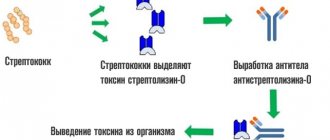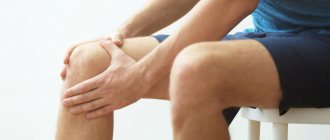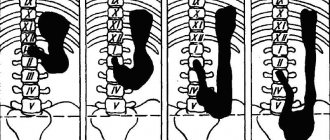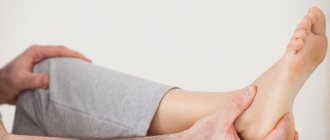Kidney prolapse, or nephroptosis, is a pathological condition that occurs when there is abnormal mobility of this organ. In this case, the kidney moves downward from its usual location and goes beyond the natural bed. Women are much more susceptible to this pathology than men. In addition, prolapse of the right kidney is more common than displacement of the left.
The kidneys should not move more than 5 cm even with breathing and physical activity. Often, a pathological displacement is found during an ultrasound of the abdominal organs completely by accident (for example, when checking the liver and gallbladder). A person is unaware of the disease, since it provokes pain only in 10% of cases.
Fact: The disease is more common in women aged 30-55 years, as well as in young children. It develops with a sharp drop in body weight and a low percentage of adipose tissue.
At CELT you can get a consultation with a urologist.
- Initial consultation – 3,000
- Repeated consultation – 2,000
Make an appointment
Indications
Surgical treatment is indicated in the following cases:
- Decreased ability to work due to pain.
- Significant mobility of the kidney.
- Hydronephrotic transformation.
- Lack of results in the treatment of pyelonephritis.
- Arterial hypertension.
- Venous hypertension and bleeding in the kidneys.
Contraindications
Surgery is not recommended for exacerbation of chronic diseases, pregnancy, intolerance to medications and anesthesia.
If a pathology is detected, it is strictly prohibited:
- To engage in the gym.
- Consume more than a gram of protein per 1 kg of body weight.
- Attend sparring in contact martial arts.
- Eat sour, spicy, smoked, fried foods.
What is the cause of kidney prolapse?
Nephroptosis is a consequence of weakening of the supporting apparatus of the kidney.
This may occur when:
- loss of elasticity of the abdominal wall due to repeated pregnancies;
- rapid and significant reduction in body weight;
- constant physical activity associated with lifting and carrying heavy objects;
- chronic severe cough;
- injuries with damage to the ligamentous apparatus of the kidney.
- genetic predisposition.
- prolonged stay in a high vibration zone.
- lack of timely treatment of infections.
- severe injuries (impacts to the kidney area or falls on the back from a great height).
- low intra-abdominal pressure due to lack of physical activity.
Complications
A common complication is the inflammatory process due to impaired urine flow. Intensive growth of bacterial microflora leads to pyelonephritis and cystitis. The patient complains of pain when urinating and increased urge. During infection, the body temperature may rise, the urine becomes cloudy and acquires an atypical odor. Urostasis threatens the formation of kidney stones and the development of hydronephrosis.
Prolonged kinks and stretching of blood vessels are fraught with increased blood pressure and hypertensive crises. Nephrogenic hypertension is diagnosed when pressure readings reach 280/160 mmHg. Art. You should be wary of torsion of veins and arteries, which leads to difficulty in the outflow of blood and lymph (lymphostasis). If both organs are displaced, kidney failure rapidly develops. Due to decreased kidney function, the patient experiences swelling, fatigue, apathy, and headaches. In the future, the doctor may prescribe hemodialysis or an organ transplant.
neroptosis kidney photo
What are the symptoms of kidney prolapse?
The most common manifestation of nephroptosis is pain in the hypochondrium or iliac region. The intensity of pain directly depends on the degree of prolapse of the kidney.
- Severe pain in the lower back due to the accumulation of urine and blood in the kidney tissues. Pain is more pronounced in a standing position. Lying down they go away completely.
- Blood during urination appears due to the destruction of blood vessels, as strong twisting occurs.
- Pain in the lower abdomen, thighs, or pelvic organs is caused by pressure on the nerve endings due to the displacement and enlargement of the kidney.
- Significant disruption of the gastrointestinal tract is caused by increased stimulation of the nerve endings located near the displaced kidney.
- The flu-like state and weakness are caused by an increase in the volume of toxic substances in the blood due to the fact that the kidney gradually loses its basic function.
- With further development of the disease, the pain becomes constant in an upright position of the body, but weakens when lying on the back.
- A severe degree of kidney prolapse is characterized by constant severe pain, sometimes reminiscent of renal colic. In addition, periodic nausea and vomiting may bother you, and complications may appear in the form of pyelonephritis, arterial hypertension, neurological pain radiating to the buttock or leg, etc.
General information about the disease
The kidneys have a certain degree of natural mobility: during physical activity or during breathing, physiological displacement of the organs occurs at a distance not exceeding the size of a vertebra in the lumbar region. If the vertical displacement of the kidney exceeds 2 cm at rest and 3-5 cm with effort, the patient is diagnosed with nephroptosis .
Anatomical features of the urinary system:
- the left kidney is usually located 2 cm higher than the right;
- in children, the normal position of the kidneys is observed by the age of 8-10 years, before this age organ prolapse is observed;
- in the anatomical bed, the kidney is supported by fascia and ligaments, as well as surrounding fatty tissue;
- Women are more prone to nephroptosis than men and are more likely to suffer from right-sided displacement.
How is kidney prolapse diagnosed?
There are 4 diagnostic methods used:
- General urine analysis.
- Ultrasonography.
- Urography.
- Palpation.
The main method for detecting nephroptosis, which is used in the multidisciplinary CELT clinic, is ultrasound examination. With its help, you can determine the presence of the disease, the stage of kidney prolapse, and also assess the impairment of its function. Additional information to clarify the diagnosis is also provided by an X-ray examination of the kidneys using a contrast agent - excretory urography.
Surveys
The diagnosis of nephroptosis is made on the basis of:
- complaints from the patient himself;
- palpation through the abdominal wall in vertical and horizontal positions;
- measuring pressure and observing its dynamics;
- results of functional and laboratory studies.
The most informative methods for detecting renal prolapse
- Ultrasound. The study is carried out in the standing and lying positions of the patient. Ultrasound determines the current position of the kidneys, size, presence of changes in tissues and foci of inflammation, and the state of the pyelocaliceal complex. Connecting Doppler ultrasound allows you to visualize blood vessels, assess blood flow and the degree of pathology.
- Excretory urography reveals the degree of displacement of the organ relative to the spine and the nature of the rotation of the kidney. For better information, it is not X-rays that are used, but computer (CT, MSCT) or magnetic resonance imaging.
- Scintigraphic study. Kidney function and urinary conduction disorders are detected by dynamic radioisotope nephroscintigraphy.
In addition to examining the urinary system, the nephrologist may refer the patient for gastroscopy, colonoscopy, or x-ray of the stomach to monitor the condition of the gastrointestinal tract, since bilateral nephroptosis causes splanchnoptosis (displacement of the abdominal organs).
Our doctors
Perepechay Dmitry Leonidovich
Urologist, Candidate of Medical Sciences, doctor of the highest category
40 years of experience
Make an appointment
Kochetov Sergey Anatolievich
Urologist, Candidate of Medical Sciences, doctor of the highest category
34 years of experience
Make an appointment
Mukhin Vitaly Borisovich
Urologist, Head of the Department of Urology, Candidate of Medical Sciences
34 years of experience
Make an appointment
Khromov Danil Vladimirovich
Urologist, Candidate of Medical Sciences, doctor of the highest category
35 years of experience
Make an appointment
Diagnostics
Diagnosis of a wandering kidney is not difficult. If the kidney is palpable and other signs of nephroptosis are present, the diagnosis can be confirmed by ultrasound and/or x-ray. Kidney ultrasound should be performed both lying down and standing. Additionally, it is necessary to conduct urine and blood tests to identify the functional state of the kidneys and the presence of complications. Nephroptosis requires blood pressure control. Blood pressure measurements are also carried out in standing and lying positions.
What is the treatment for nephroptosis?
Laparoscopic nephropexy
- Cost: 100,000 - 135,000 rubles.
- Duration: 90 – 120 minutes
- Hospitalization: 3-4 days in hospital
More details
If kidney prolapse is diagnosed early, therapy includes wearing a bandage. Our specialists select it on an individual basis, which guarantees the best results.
If nephroptosis has already reached a pronounced stage and leads to serious dysfunction of the kidney or surrounding internal organs, then the question of surgery is raised. Usually it involves fixing the kidney in its natural position.
Degrees of nephroptosis
Today in urology there are three degrees of nephroptosis depending on the degree of displacement of the kidney from its normal position.
- Degree I is characterized by the lower renal pole moving down a distance of one and a half lumbar vertebrae.
- Stage II is diagnosed when the lower pole descends onto two lumbar vertebrae.
- Grade III is assigned to nephroptosis when the lower pole of the kidney is displaced by more than three vertebrae.
The higher the degree of pathology, the more pronounced the signs of the disease.
Surgery for prolapsed kidneys
In the absence of contraindications and stable results with conservative treatment, surgical intervention is prescribed. There are 4 types of operations in total:
- Attaching the organ to the ribs with muscle flaps.
- Fixation with synthetic materials.
- Attachment of the fibrous capsule by connective tissue.
- Fixation to the ribs using a suture in the kidney.
After surgery, you must remain in bed for 14 days to avoid relapse.
Timely detection of nephroptosis and its adequate treatment is the key to a quick and effective solution to any problems associated with kidney prolapse. To diagnose the disease, you must consult a urologist at the CELT multidisciplinary clinic.
Treatment of the disease
- Drug treatment is aimed at eliminating complications caused by constant movement of the kidney.
- Surgical treatment consists of nephropexy - fixation of the kidney. The operation is usually performed laparoscopically, which secures the kidney in its proper place without complications. In this case, polypropylene implants are used - fixators. Such operations have the least degree of trauma to the body and guarantee a complete recovery from the disease. The postoperative period requires rehabilitation of the patient - the use of fixing bandages, a minimum of physical activity and control monitoring using ultrasound and blood and urine tests. Pregnancy can be planned no earlier than six months after the operation.
- In some cases, a specially selected diet aimed at increasing body weight will help.
- Therapeutic gymnastics plays an important role in the fight against the disease. It strengthens the abdominal and back muscles, normalizes pressure inside the abdomen and limits the movement of the kidney.
- The doctor may prescribe the wearing of special medical bandages and fixing corsets, which are worn strictly in a horizontal position (but are contraindicated in case of fixed nephroptosis).
- A number of physiotherapeutic procedures are used, including hydrotherapy - therapeutic showers and bathing. Using cold compresses.
Nephroptosis of the kidney - this disease is effectively treated with a conservative method only in the initial stage, then the treatment process is difficult and you will have to resort to surgical intervention.
Get a consultation with a general practitioner
Our services
The administration of CELT JSC regularly updates the price list posted on the clinic’s website. However, in order to avoid possible misunderstandings, we ask you to clarify the cost of services by phone: +7
| Service name | Price in rubles |
| Ultrasound of the kidneys and adrenal glands | 2 700 |
| Urography intravenous | 6 000 |
| Laparoscopic nephropexy | 100 000 — 135 000 |
All services
Make an appointment through the application or by calling +7 +7 We work every day:
- Monday—Friday: 8.00—20.00
- Saturday: 8.00–18.00
- Sunday is a day off
The nearest metro and MCC stations to the clinic:
- Highway of Enthusiasts or Perovo
- Partisan
- Enthusiast Highway
Driving directions
Kidney anatomy
In humans, the kidneys are located in the retroperitoneal space of the lumbar region. The right kidney is lower than the left, and its size is usually smaller. The kidneys are held in their bed with the help of a muscular frame and fatty perinephric tissue. In this way, moderate fixation is achieved, allowing the kidneys to move 3-6 cm during breathing, and shock absorption when running, jumping or physical activity.
It is important! 5 main signs of a wandering kidney:
- Regular aching pain in the lower back, intensifying when lifting weights, after running or jumping and disappearing in a horizontal position.
- Nocturia is the predominance of nighttime diuresis over daytime.
- Increase in blood pressure by 15-20 mm. Hg Art. in a standing position.
- The presence of protein, salt crystals, and leukocytes in the urine is higher than normal.
- Fatigue, irritability, insomnia for no reason.
If you have three out of five signs, be sure to consult a doctor to confirm or rule out nephroptosis!
comments powered by HyperComments










